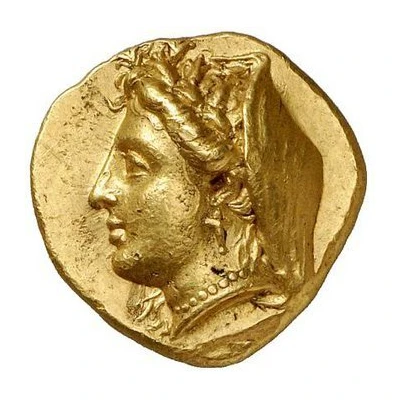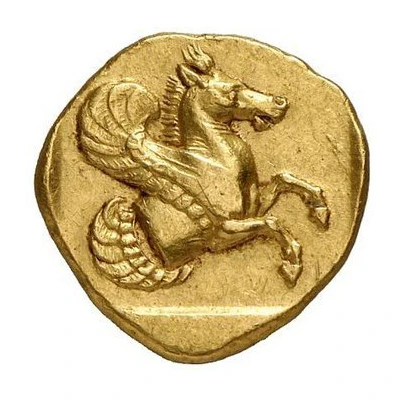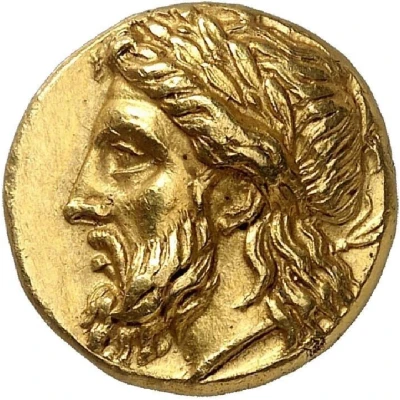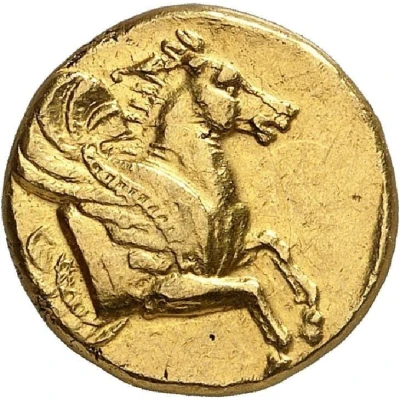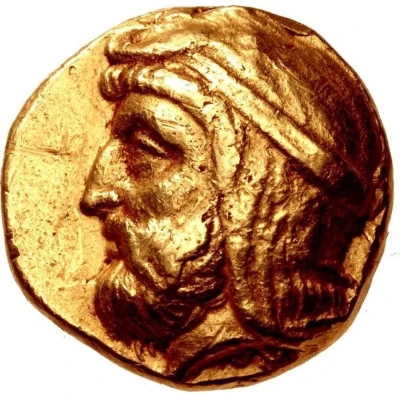
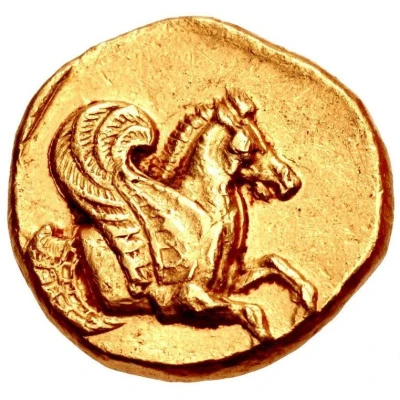

© Classical Numismatic Group, Inc.
Stater - Artabazos 356 BC
356 BC year| Gold | 8.44 g | 16 mm |
| Issuer | Lampsakos (Mysia) |
|---|---|
| Type | Standard circulation coin |
| Year | 356 BC |
| Value | Gold Stater (20) |
| Currency | Drachm |
| Composition | Gold |
| Weight | 8.44 g |
| Diameter | 16 mm |
| Shape | Round (irregular) |
| Technique | Hammered, Incuse |
| Orientation | Variable alignment ↺ |
| Demonetized | Yes |
| Updated | 2024-10-10 |
| Numista | N#433513 |
|---|---|
| Rarity index | 100% |
Reverse
Forepart of Pegasos right within shallow incuse square.
Comment
Troxell, Orontes, pp. 35-37 and pl. 4, B; Traité pl. CLXXII, 7; Hunterian p. 271, 2.
Traditionally, these staters have been assigned to the satrap Orontes. Although Orontes did control portions of Mysia, he was in fact subordinate to his kinsman Artabazos who was the true satrap of the entire region of Daskylion, which encompassed Lampsakos at the time this coin was struck. When both Orontes and Artabazos rebelled against the Persian king Artaxerxes III in 357 BC, Artabazos secured Lampsakos through the agency of the hired Athenian mercenary, Chares. When Chares accomplished his mission, Artabazos richly rewarded him in coin, the likely occasion for striking this issue.
Interesting fact
One interesting fact about the Artabazos Stater from Lampsakos (Mysia) is that it features a unique blend of Greek and Persian design elements. The obverse side of the coin depicts a bearded king, believed to be Artabazos himself, wearing a Persian-style crown and a cloak, while the reverse side shows a Greek-style mythological scene of a griffin attacking a deer. This fusion of design styles reflects the cultural exchange and influence that occurred between the Greek city-states and the Persian Empire during the 4th century BC.
